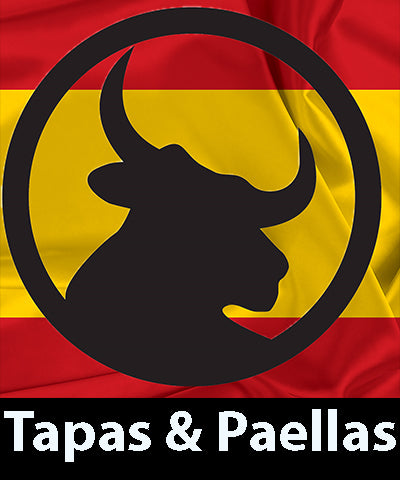It is widely agreed that rice cultivation originated in what is today China, in the upper Yangtze river basin 13,500 years ago, and that by 4000 BC it was being spread north as far as the Himalayas and south as far as Guam in Oceania.
India was instrumental in disseminating rice cultivation westward, and eventually the practice of rice farming reached Africa.
The first accounts we have of rice in the western world date to classical Greece in the writings of the Greek tragedian Sophocles (495-406 BC) who mentioned with the name Orinda a cereal cultivated by a people who lived along the lower reaches of the Indus.
It is believed that other sources of rice into the western world came from Egypt, from Phoenician trade and from roman soldiers returning from Alexander the Great's military expedition to Asia.
By the 8th Century AD, the Moors in northern Africa under the Umayyad caliphate invaded the Iberian peninsula as part of its efforts to conquer Constantinople and retained it for the next seven hundred years (711-1492) bringing with them cultural and scientific assets such as architecture, music and food that permeate the culture of the land to this day.
Among those were rice cultivation and irrigation technologies which they called “Oruz” or “Arouz” where the modern word for rice in Spanish and Portuguese “Arroz” derives from.
As a legacy of the conquest by Rome, of the regions of Galia and Hispania, the use of a flat frying pan called “Patella” in Latin, originally used as a campfire tool by roman soldiers became widespread in what are today France and Spain. The linguistic adaptation of the original name was “Padelle” in French, "Paila" in Spanish and “Paella” in Catalan.
Paella is both the name of the dish, and the shallow flat pan used to prepare it. The swampy area of Albufera, in Valencia, Spain, that had benefited from Umayyad rice cultivating technologies, used the legacy of the roman pan to create a unique way of cooking that would become synonym of Spanish gastronomy. The paella.
Curiously the name of the dish is the same as the pan. So when addressing the pan, you call it “paella” not “paellera” which idiomatically would refer to a woman who makes paella, an oxymoron of sorts since the dish is generally prepared by men. Originally said to contain rice and game from the marshes around the rice patties of Valencia, including rabbits and snails, birds and some shallow water eels, to this day traditional ingredients of a "true Valencian" paella, the concoction became popular as a regional dish when it hit coastal towns and was adopted by fishing villages.
It was enhanced by seafood and made into a culinary affair destined to become Sunday lunch fare prepared around the family. Today it is known to include chorizo as well, the ubiquitous Spanish sausage made with smoked paprika. The popularity of the dish spread throughout Spain, gaining regional varieties with local ingredients, but always using the same method of cooking rice in the shallow flat pan.
Paella eventually left the borders of Spain to arrive at the shores of the conquered new world and can be traced to Cuba and Peru during the 16th Century, spreading rapidly through Spanish conquered territories.
Today virtually every country in Latin America has a version of paella to call their own. As the dish lends itself to the use of regional and local ingredients, new and exciting flavors can be found, although purists in Spain insist that it can only be called “paella” if prepared a certain way, it flourishes anew with exciting combinations in the new world. Gaining independence from gastronomic dogma, ventures into new and uncharted culinary waters.

